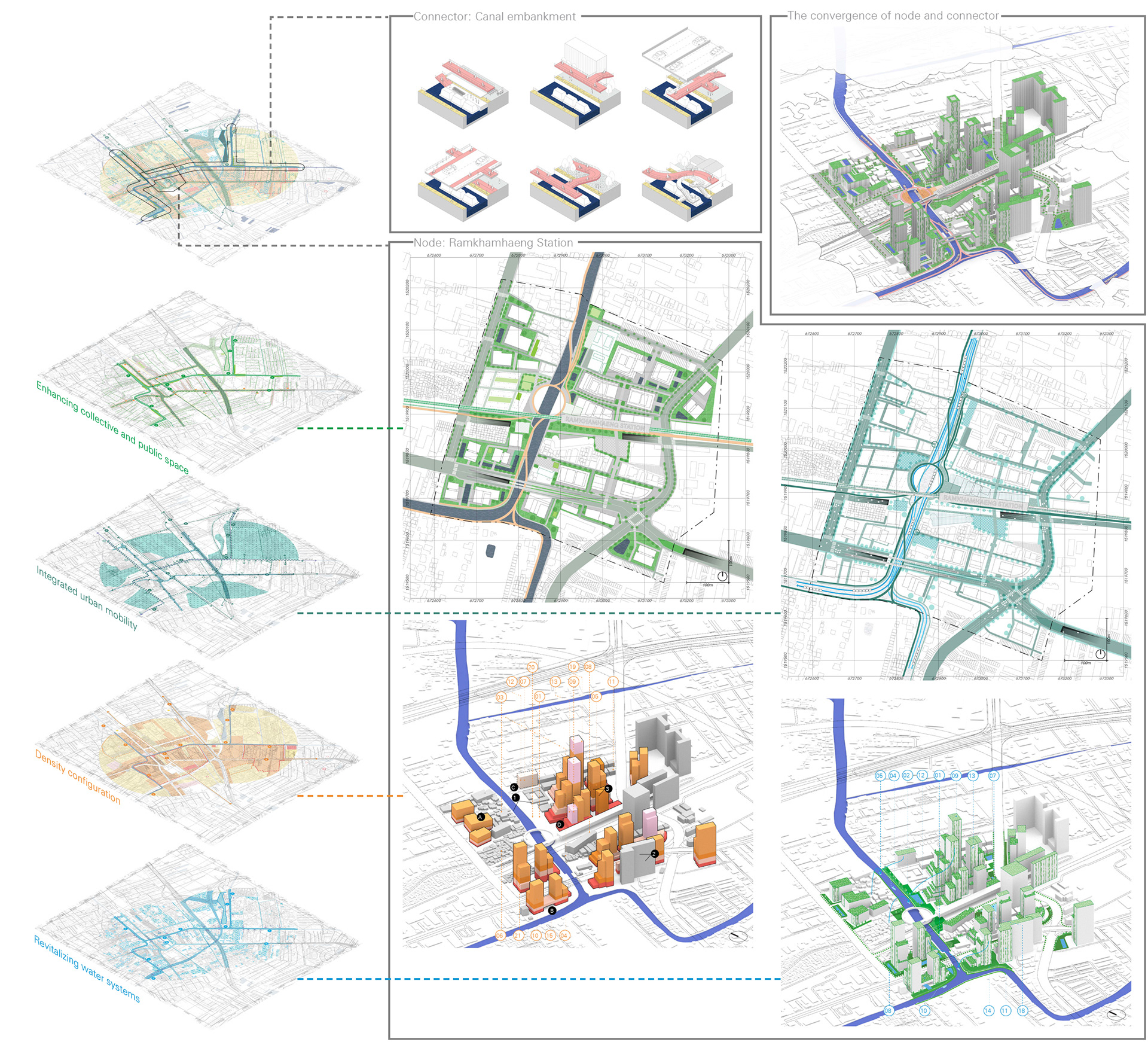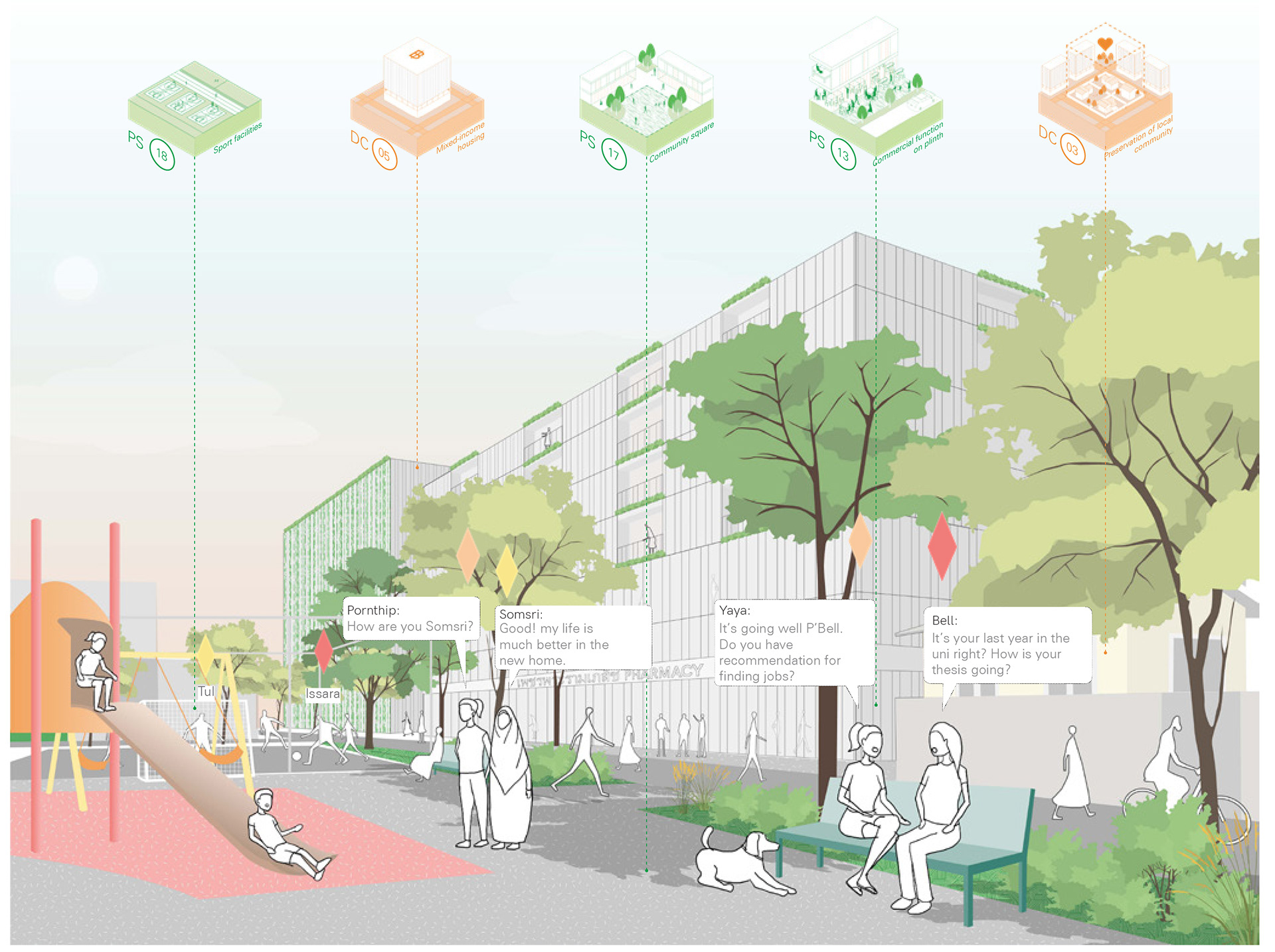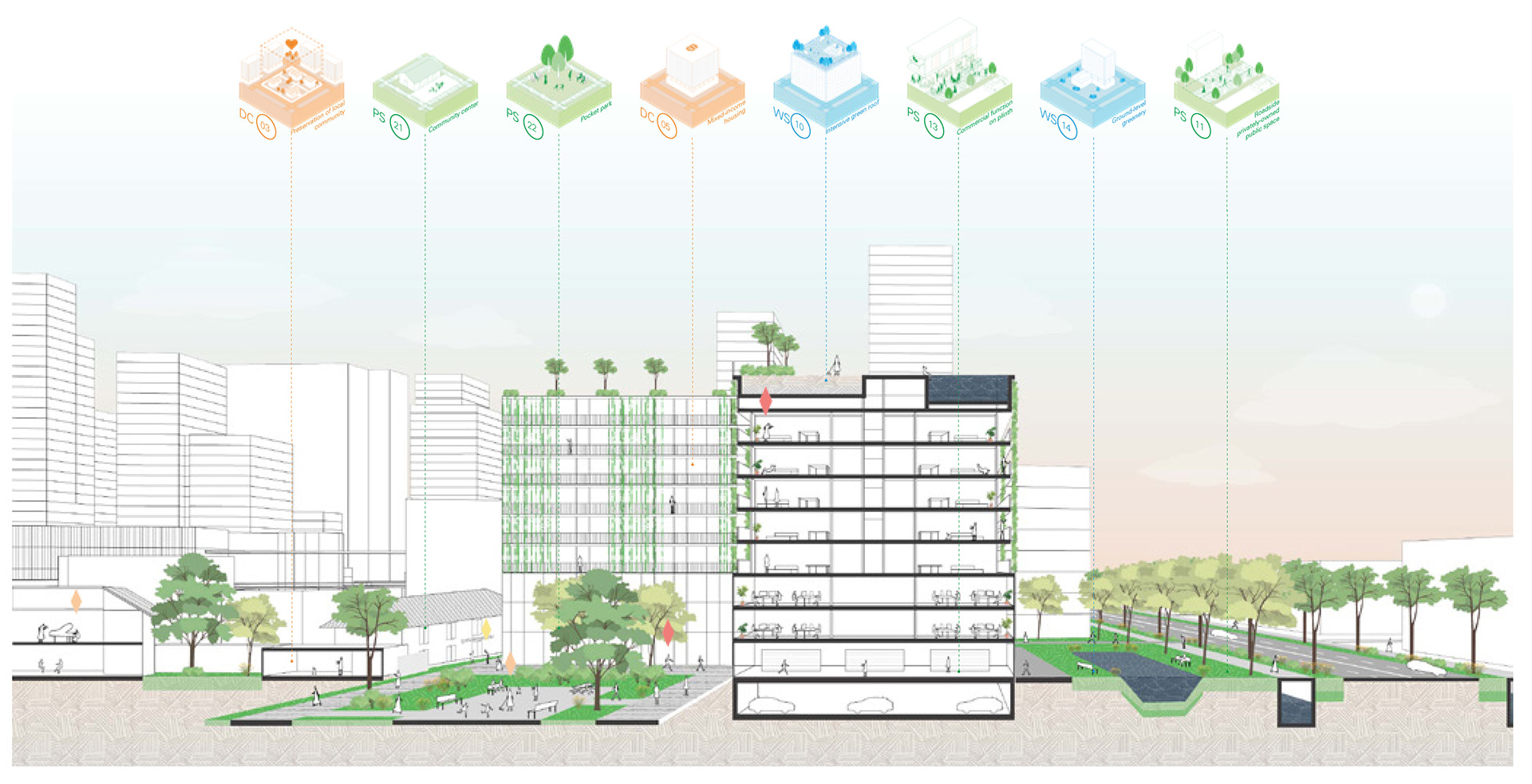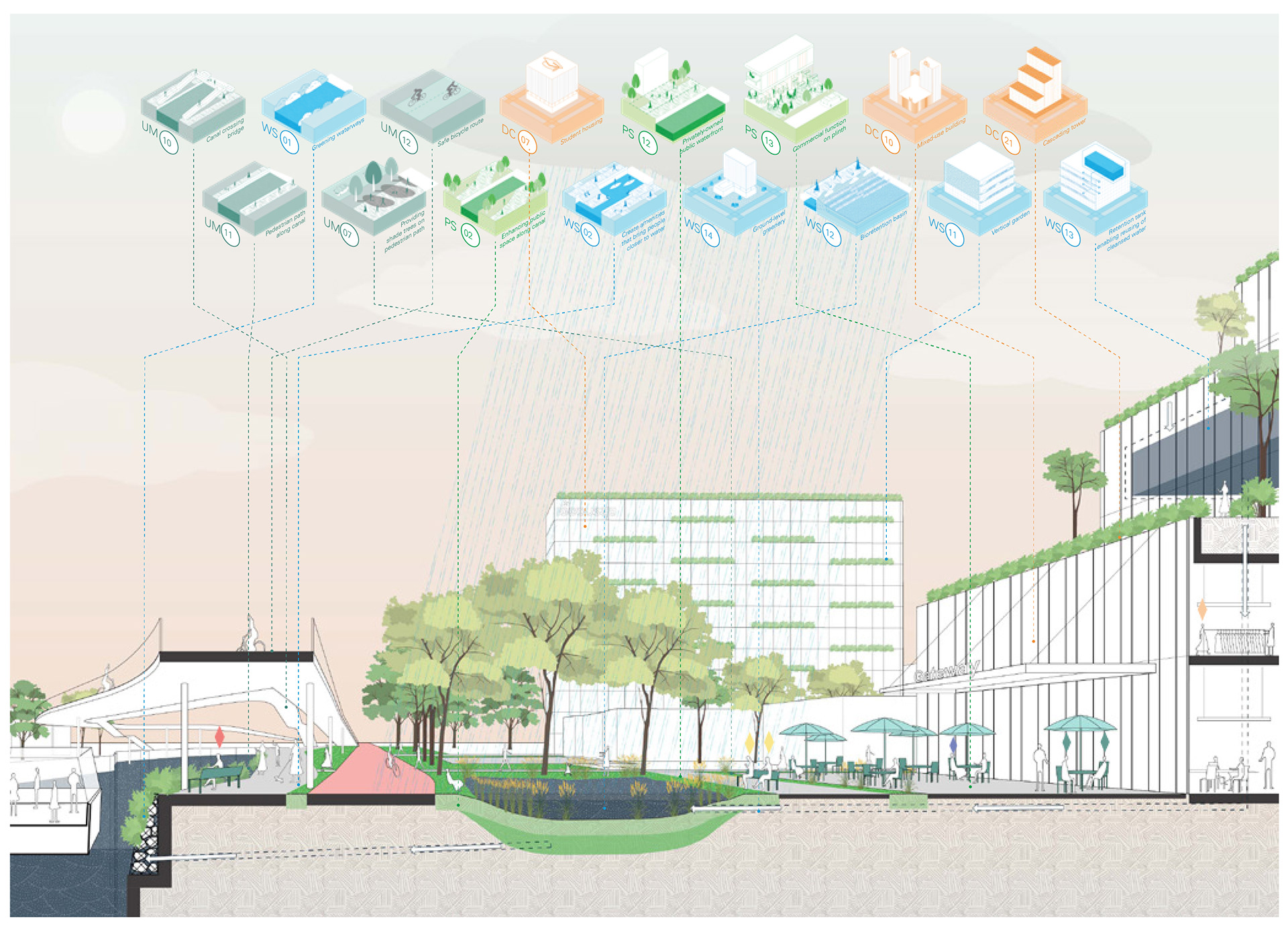The Convergence of Node and Connector
Nominated for Archiprix Preselection 2020-2021, Faculty of Architecture and the Built Environment, TU Delft
Course: MSc Graduation Thesis, MSc 4 | 2019-2021
Graduation Studio: Design of the Urban Fabric
Mentors: Dr.ir. F.D. (Franklin) van der Hoeven (First Mentor), Dr.ir. Gregory Bracken (Second Mentor)
Location: Bangkok, Thailand
Full report available at TU Delft Repository
Bangkok is grappling with urban sprawl driven by the rise of car mobility. The transition from water-based to land-based development has led to neglect of the water system, turning it into a haven for impoverished citizens. This exacerbates flooding and ultimately results in social segregation and unlivable environments. To address these issues, Transit-Oriented Development (TOD) and Compact City concepts were introduced, reshaping land-use plans and metro systems. While predominantly applied in the Global North, these concepts need comprehensive study for contextual adaptation in Bangkok. This project seeks development potential and proposes potential water-borne transport canals and macro-scale TOD locations. It introduces four layers of strategy, translated into patterns and applied in a pilot project. The realization suggests a participatory planning system to ensure inclusive and efficient implementation, aiming for livable and socially diverse environments.
Finding Potentialities
Potential waterways and TOD locations
Finding Potentialities
Metropolitan Scale: Strategic Integrated Model
“In 2050, Bangkok will become a compact city where fast mobility and slow mobility integrate and contribute to the efficient and healthy lifestyles. Waterways will be resurrected and equipped with clean and innovative waterborne transport, synergising with other modes. As more collective transport systems are provided, they will be the first option that citizens choose to commute with, while private automobiles will become less prioritized, and be limitedly used. The optimization of green blue-grey infrastructure will increase the performance of the water management and sustainably counteract flood risk. Most importantly, collective spaces will be enhanced and placed as a center of densification to enable diverse social and livable urban environments.”
On the metropolitan scale, strategies are proposed aiming to achieve the vision mentioned above. Four layers are depicted to tackle complex issues as stated, which are enhancing collective and public space, integrated urban mobility, density configuration, and revitalizing water systems.
Toolbox
According to Alexander et al. (1977), cities will not be able to become alive, if they are not made by all the people in society, and if these people do not share a common pattern language. Therefore, the proposed strategies are translated into patterns which are also divided into four categories as per layers for the application in micro-scale design intervention. Moreover, these patterns can also be used in the public participation, for example design workshop where local community, designers, and authorities participate.
Micro Scale: Pilot Project - Ramkhamhaeng
“In 2050, Ramkhamhaeng will become the new center of Bangkok where people are invited to live, work, and play. Canals will be unpolluted and optimized for transport, synergizing with other modes. They will play a vital role as an activator that brings about new economic development which not only benefits newcomers but also local residents.”
To realize the concept of canal as an urban activator, the design intervention is conducted in Ramkhamhaeng area. As the strategy is proposed with four layers, and it is translated into patterns that aim to be applied in the micro-scale projects. This layer-based approach is utilized in the design intervention to systematically apply each pattern and ensure that all four aspects are tackled through the design.

Canal as an urban activator

Four layers of strategies
The Convergence of Node and Connector
Four precincts are intervened to demonstrate the convergence of nodes and connectors. The enhancement of informal settlements is closely linked to the participatory model, allowing them to customize their neighborhood according to their aspirations. In proximity to the slums, the existing neighborhood will be conserved while bolstering its sense of community. On the opposite side of the canal, significant potential exists for introducing Publicly-Accessible Open Spaces (POPS) along the waterfront within large mixed-use developments. The final component encompasses the interchange pier, serving as a junction for various transportation.





